Qnap TS-853A-8G review
This Ubuntu NAS will give you something to sing about
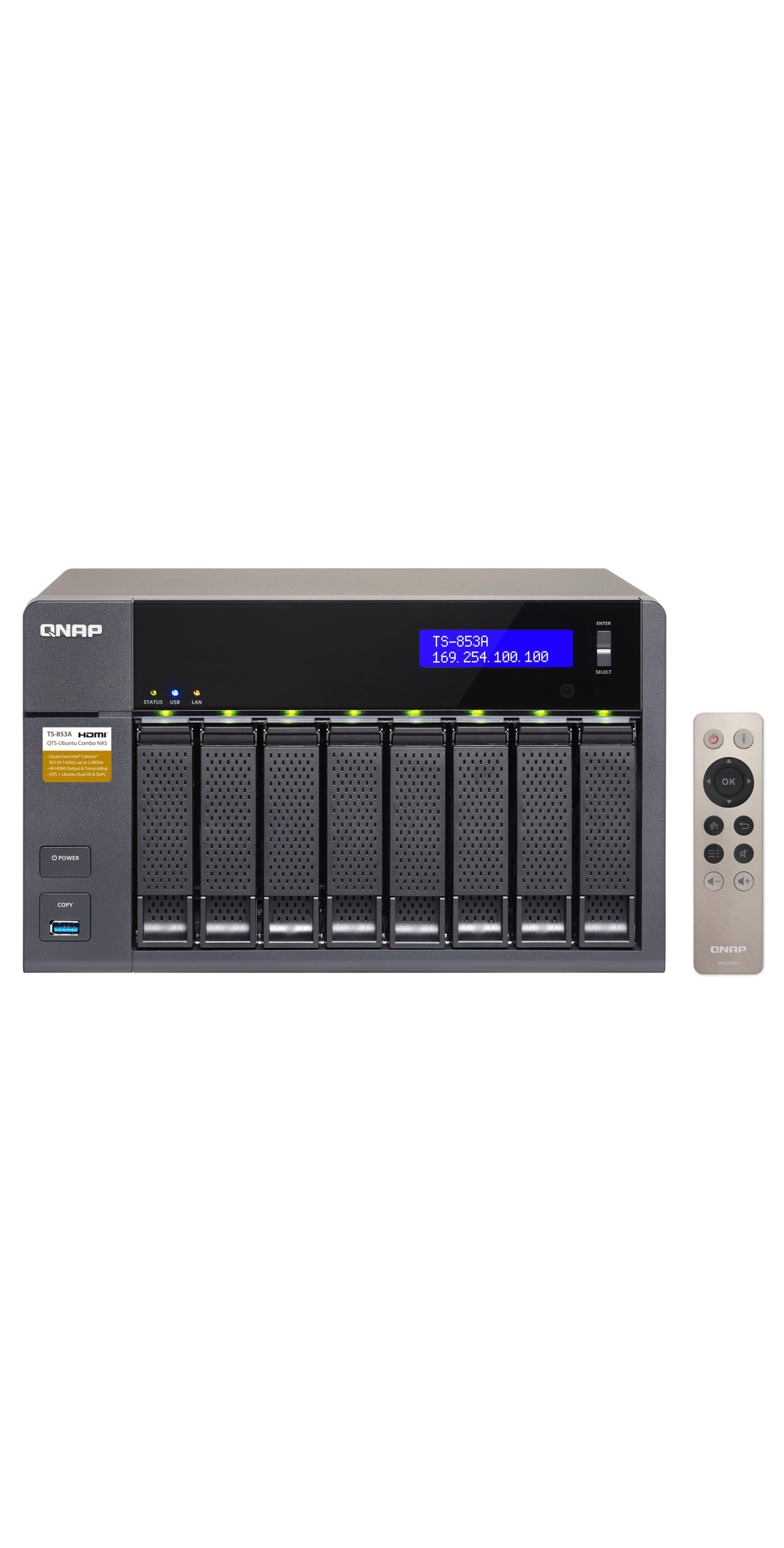

Despite the glut of entertainment features, the TS-853A is an affordable and fast eight-bay NAS appliance with business-class data protection and virtualisation features
-
+
Good value; Super data protection features; Excellent performance with Seagate’s 8TB NAS HDDs; Extensive snapshot support
-
-
Karaoke ports, HD and Linux Stations can’t co-exist easily; No expansion slots

Just when we thought you couldn't squeeze any more storage features into a NAS appliance, along comes Qnap's TS-x53A family. With Intel's Braswell' Celeron N3150 processor in the driving seat, they have tons of data protection features while the new Linux Station app makes them Qnap's first NAS devices that can run Linux as well as QTS, QNap's own operating system.
This allowed us to run QTS and Linux alongside each other and output the latter to one of the appliance's dual HDMI ports for local control. A key difference between Qnap's Container Station, its separate virtualisation app, and the Linux Station app is that the latter has full access to all storage and shares on the appliance.
On review is the eight-bay TS-853A with 8GB of DDR3L memory the maximum supported by the N3150 CPU. There are four Gigabit Ethernet ports and four USB3 connectors, but the lack of expansion slots means you can't upgrade to 10-Gigabit Ethernet.
A feature we can't see businesses being too chuffed about is the dual microphone sockets at the back. Yes, you can even team these up with the free OceanKTV app and turn the TS-853A into a Karaoke machine.
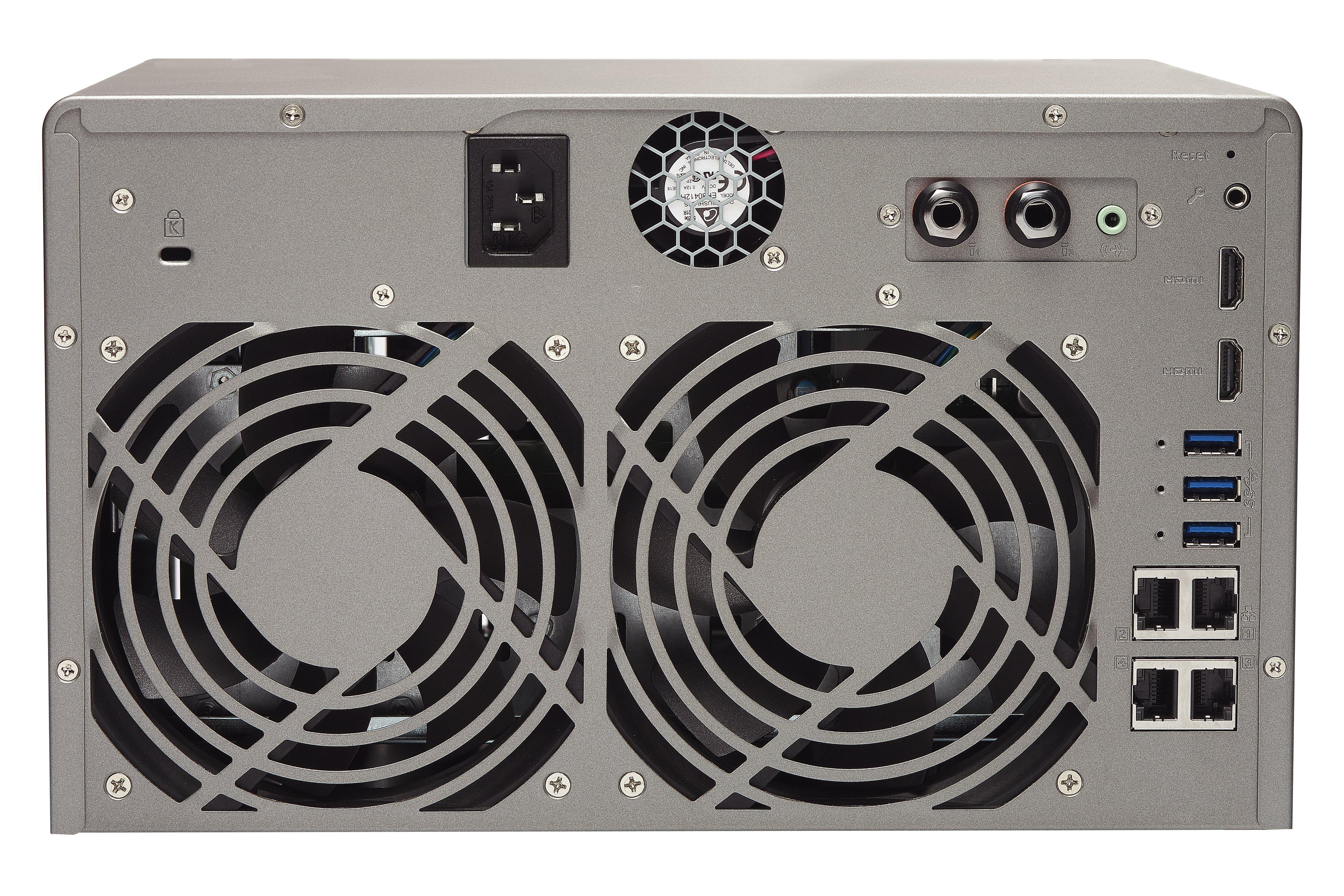
Linux Station
The Linux Station app runs on appliances with at least 4GB of memory and the Container Station app loaded. On first startup, it downloaded Ubuntu Desktop and installed it for us without any fuss.
We had it ready for action in fifteen minutes, but support for Debian and Fedora are future features yet to be certified by Qnap. We had no problems using it with a local HDMI monitor, keyboard and mouse plus we could enable remote desktop and VNC to it using a web browser.
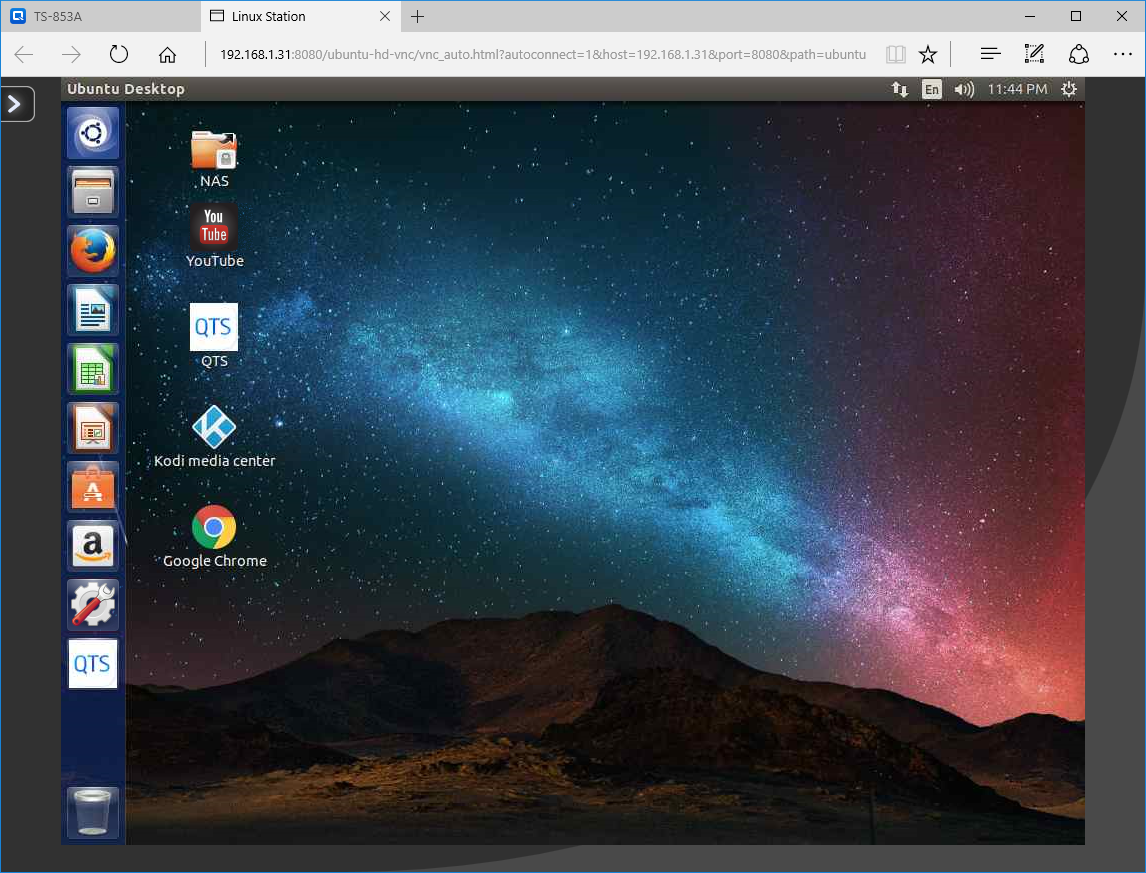
We ran Ubuntu Desktop from Linux Station and remotely accessed it using VNC
One glitch is you can't have the HD (HybridDesktop) Station active at the same time as they can't both use the HDMI ports. This isn't a huge drawback as the HD Station app, used for browsing the web and playing locally stored media files, is redundant as you can accomplish the same tasks in Linux. Even so, we could swap between them as needed. You'll similarly need to swap between apps if you also want to use the HD Station app for streaming multimedia access, but this is easier as Qnap includes a handy remote control handset.
Top performance
With four of Seagate's latest 8TB NAS hard drives fresh in the labs, we used these for performance testing. With a share mapped to an HP ProLiant DL380 Gen9 rack server running Windows Server 2012 R2, we watched Iometer record fast raw read and write rates of 117MB/sec and 113MB/sec. Real world testing was equally impressive as our 25GB file copy returned read and write rates of 114MB/sec and 111MB/sec.
We tested maximum performance by adding three more Xeon E5-2600 v3 servers each with a dedicated Gigabit Ethernet link and network share. Running Iometer on all four servers returned cumulative raw read and write speeds of 457MB/sec and 440MB/sec.
It also delivered top IP SAN speeds with Iometer reporting sequential read and write speeds of 116MB/sec for a 600GB target. We upped the pressure with a quad-Gigabit MPIO link and saw Iometer return read and write rates of 465MB/sec and 330MB/sec.
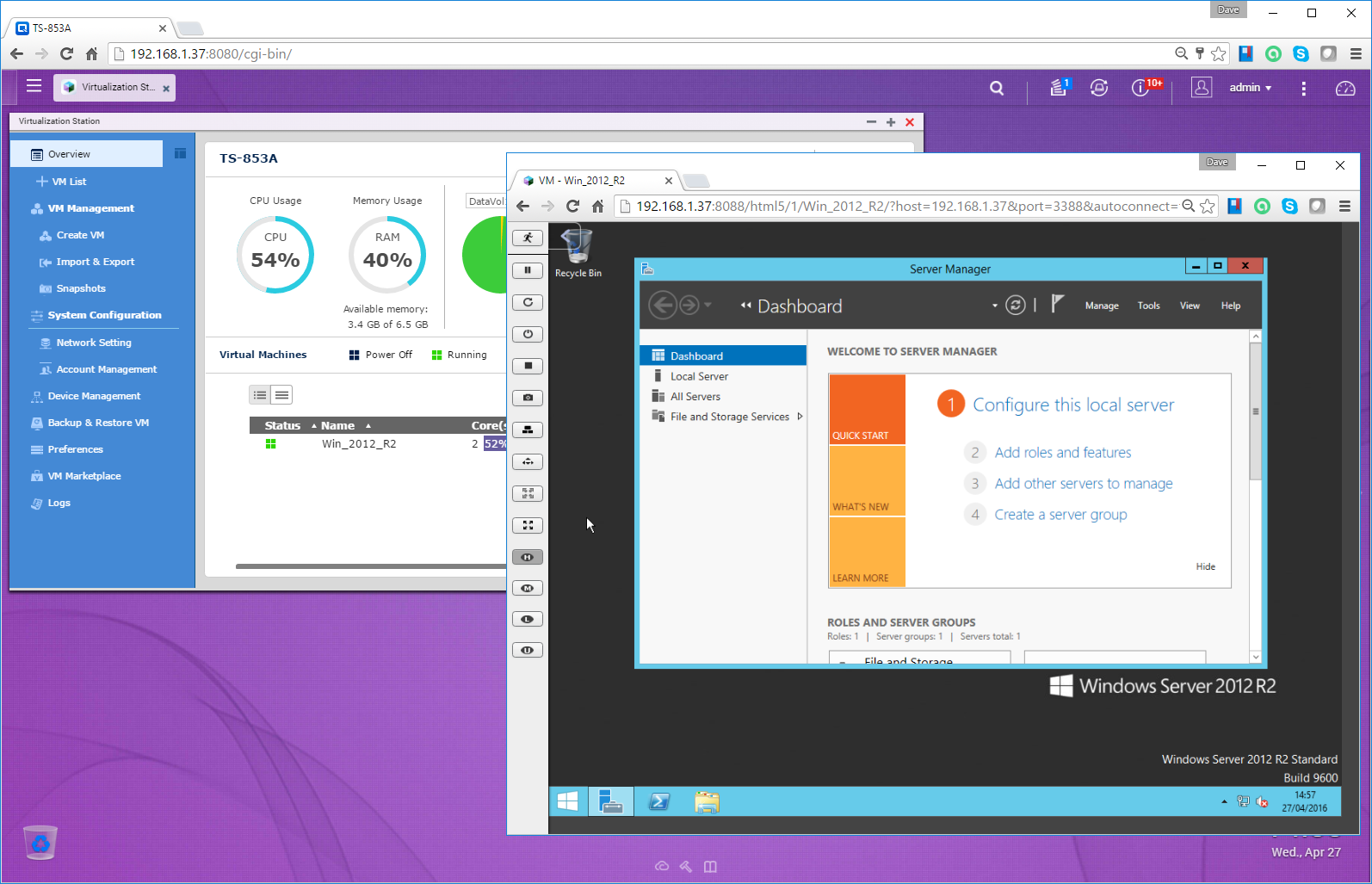
Qnap's Virtualization Station hosted a Windows Server VM even while Linux Station was running
Snapshots
Qnap's snapshots can run on EXT4 thick and thin volumes Synology only supports them on its 64-bit appliances that use BTRFS and the new Snapshot Replication app. Qnap's Snapshot Manager app makes light work of creating snapshots of NAS volumes and iSCSI LUNs where we could run them on-demand or schedule them.
Smart snapshots save space as they'll only be taken if data has changed since the last one. Recovery is equally pain-free as we viewed our snapshots and could use the Revert option for a full recovery or we could browse specific NAS volumes and restore individual files.
The Snapshot Replica feature is great for off-site backup as it takes a snapshot of a local appliance and replicates it to a remote one. We tested this with a TS-1263U-RP and after an initial replication of a test volume on the TS-853A, we could run scheduled incremental snapshots, view the vault on the remote unit, restore files and clone entire snapshots.
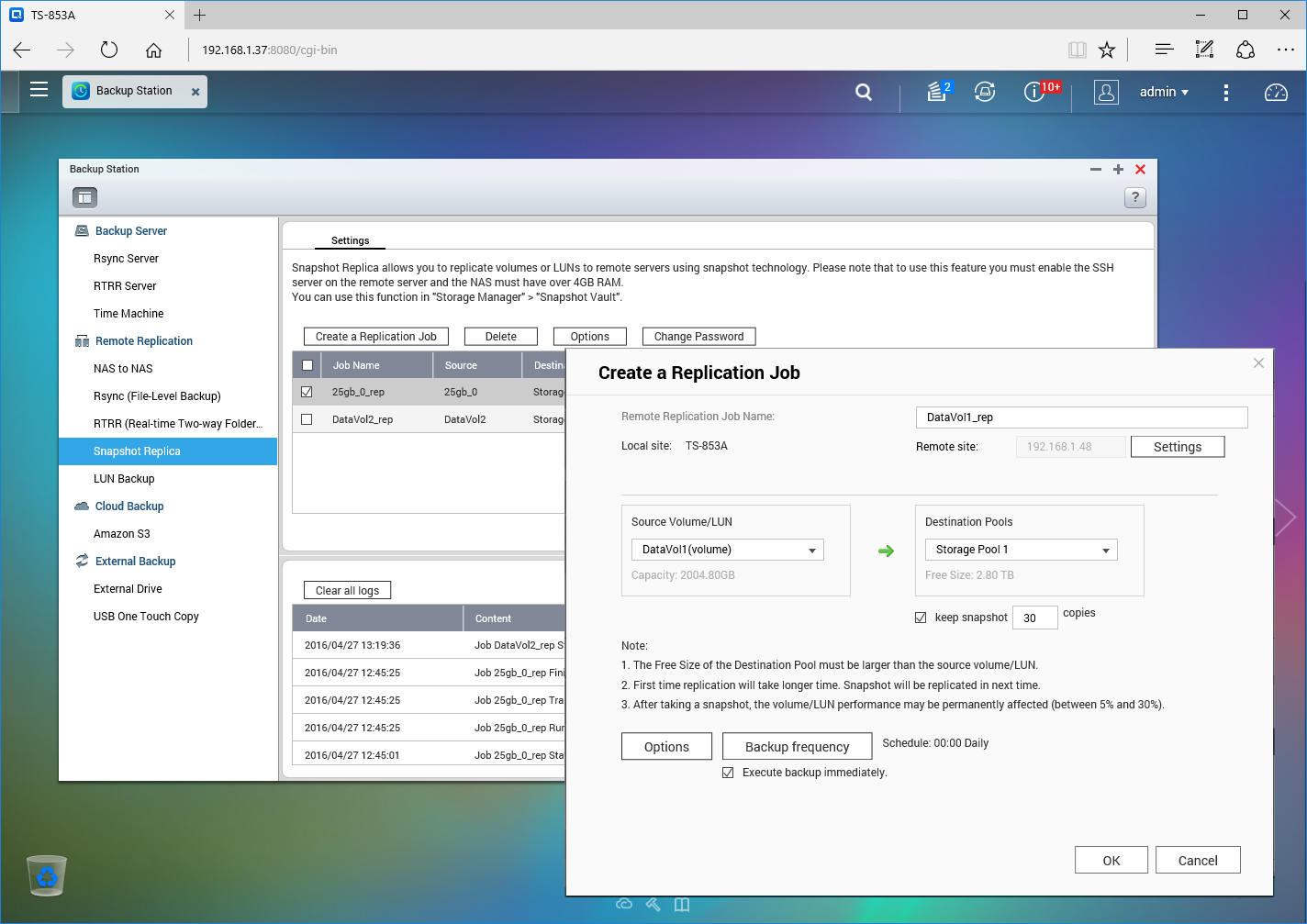
The Snapshot Replica app can replicate volumes and iSCSI targets to remote sites
More backup and cloud features
The TS-853A is packed with standard backup apps for securing data across local folders, to external hard drives and Rsync-compatible remote appliances. Qnap's RTRR (real-time remote replication) runs one-way synchronizations between local and remote appliances and there's a separate option in the Storage Manager for LUN backups.
Cloud provider support is top notch with free apps for Microsoft Azure, Google Cloud Storage, Amazon Glacier, iDrive and more. Amazon S3 is supported in the Backup Station app which we used to secure data to buckets in our cloud account.
The new Connect to Cloud Drive app links up with file syncing services such as Dropbox, Microsoft OneDrive and Google Drive. We linked it to our own accounts and could view all their contents from the File Manager and use it to upload and download files.
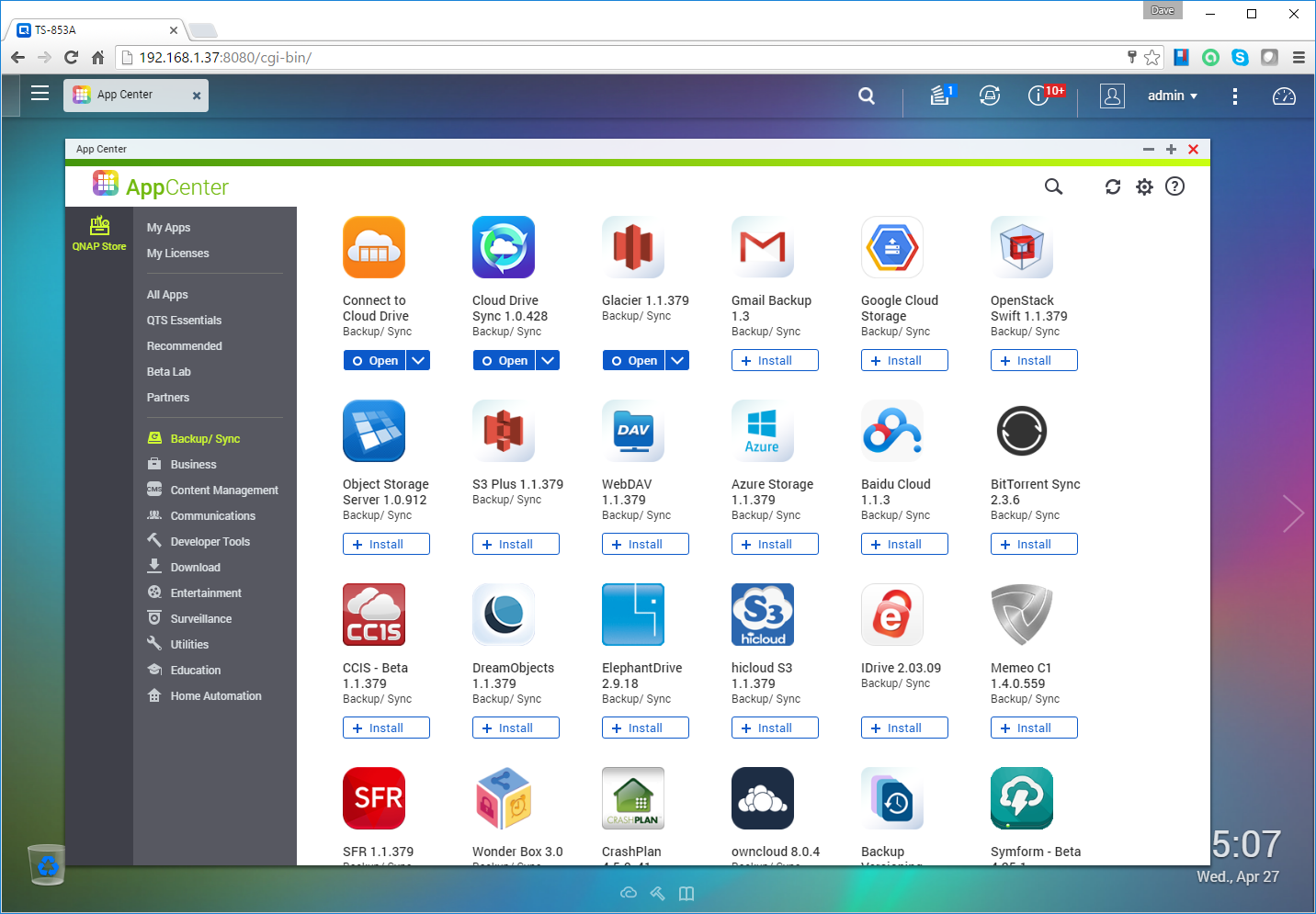
Qnap offers a remarkable range of data backup and cloud apps
Conclusions
If you can look past the TS-853A's multimedia features and daft Karaoke ports, small businesses will find a big data storage repository at a fair price. Qnap's QTS software delivers plenty of data protection features and performance using Seagate's new 8TB NAS drives is exemplary.
The Linux Station could prove useful for developers and there are plenty of other virtualization features as well. With a price tag of under 600 for a diskless model, it's a very good value NAS.
Verdict
Despite the glut of entertainment features, the TS-853A is an affordable and fast eight-bay NAS appliance with business-class data protection and virtualisation features
Chassis: Desktop
CPU: 1.6GHz Intel Celeron N3150
Memory: 8GB DDR3L-1600 (max. 8GB)
Storage: 8 x 3.5in/2.5in hot-swap SATA drive bays
Array support: RAID 0, 1, 5, 6, 10, hot spare, JBOD
Network: 4 x Gigabit Ethernet
Other ports: 4 x USB3, 2 x HDMI
Remote control handset: Yes
Management: Web browser
Warranty: Two years RTB
Get the ITPro daily newsletter
Sign up today and you will receive a free copy of our Future Focus 2025 report - the leading guidance on AI, cybersecurity and other IT challenges as per 700+ senior executives
Dave is an IT consultant and freelance journalist specialising in hands-on reviews of computer networking products covering all market sectors from small businesses to enterprises. Founder of Binary Testing Ltd – the UK’s premier independent network testing laboratory - Dave has over 45 years of experience in the IT industry.
Dave has produced many thousands of in-depth business networking product reviews from his lab which have been reproduced globally. Writing for ITPro and its sister title, PC Pro, he covers all areas of business IT infrastructure, including servers, storage, network security, data protection, cloud, infrastructure and services.
-
 ‘Phishing kits are a force multiplier': Cheap cyber crime kits can be bought on the dark web for less than $25 – and experts warn it’s lowering the barrier of entry for amateur hackers
‘Phishing kits are a force multiplier': Cheap cyber crime kits can be bought on the dark web for less than $25 – and experts warn it’s lowering the barrier of entry for amateur hackersNews Research from NordVPN shows phishing kits are now widely available on the dark web and via messaging apps like Telegram, and are often selling for less than $25.
By Emma Woollacott Published
-
 Redis unveils new tools for developers working on AI applications
Redis unveils new tools for developers working on AI applicationsNews Redis has announced new tools aimed at making it easier for AI developers to build applications and optimize large language model (LLM) outputs.
By Ross Kelly Published
-
 Google layoffs continue with "hundreds" cut from Chrome, Android, and Pixel teams
Google layoffs continue with "hundreds" cut from Chrome, Android, and Pixel teamsNews The tech giant's efficiency drive enters a third year with devices teams the latest target
By Bobby Hellard Published